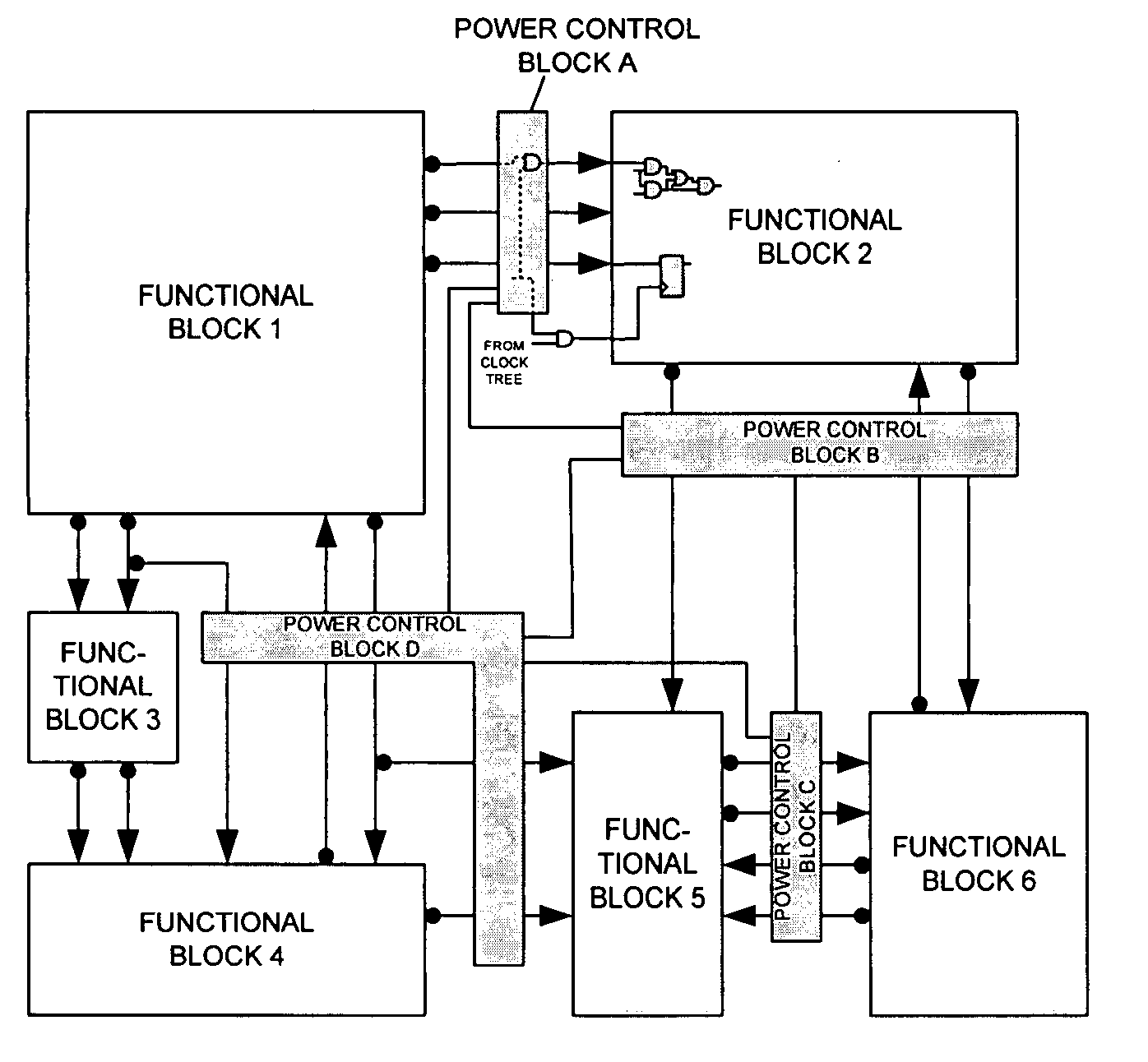Integrated circuit with autonomous power management
a technology of integrated circuits and power management, applied in the field of integrated circuits, can solve the problems of limited “visibility” of the operation of individual blocks or cores, high power consumption, and difficult for the integrated circuit designer to anticipate the applications of their chips, and achieve the effect of effective power saving and greater visibility of the operation of cores
- Summary
- Abstract
- Description
- Claims
- Application Information
AI Technical Summary
Benefits of technology
Problems solved by technology
Method used
Image
Examples
Embodiment Construction
[0029] Various embodiments of the present invention will be described with reference to the accompanying drawings. It is to be noted that the same or similar reference numerals are applied to the same or similar parts and elements throughout the drawings, and the description of the same or similar parts and elements will be omitted or simplified.
[0030]FIG. 1 illustrates a diagram of an autonomous distributed power management system coupled with multiple functional blocks (functional blocks 1-6 in FIG. 1) in an integrated circuit. The functional block can be a user defined logic block, or a third party's core, or other forms. The autonomous power management system, according to the present invention, includes power management circuitry, which is preferably implemented in the form of circuit blocks distributed among the multiple blocks of the integrated circuit. The circuit blocks indicated as power control blocks A-D in FIG. 1 are connected to interconnects in the integrated circuit...
PUM
 Login to View More
Login to View More Abstract
Description
Claims
Application Information
 Login to View More
Login to View More - R&D
- Intellectual Property
- Life Sciences
- Materials
- Tech Scout
- Unparalleled Data Quality
- Higher Quality Content
- 60% Fewer Hallucinations
Browse by: Latest US Patents, China's latest patents, Technical Efficacy Thesaurus, Application Domain, Technology Topic, Popular Technical Reports.
© 2025 PatSnap. All rights reserved.Legal|Privacy policy|Modern Slavery Act Transparency Statement|Sitemap|About US| Contact US: help@patsnap.com



